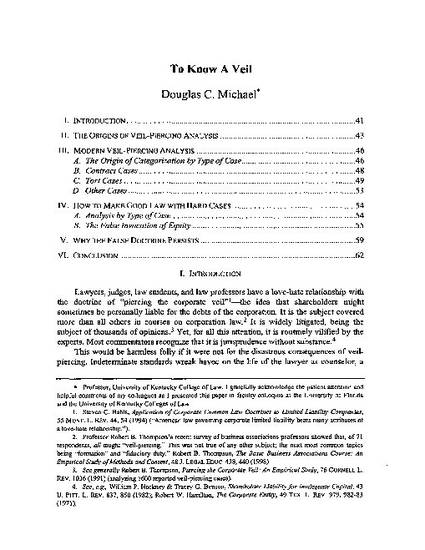
Lawyers, judges, law students, and law professors have a love-hate relationship with the doctrine of “piercing the corporate veil”—the idea that shareholders might sometimes be personally liable for the debts of the corporation. It is the subject covered more than all others in courses on corporation law. It is widely litigated, being the subject of thousands of opinions. Yet, for all this attention, it is routinely vilified by the experts. Most commentators recognize that it is jurisprudence without substance.
This Article is an attempt to form a basis for rigorous analysis of virtually every veil-piercing case and to rid the law of this wandering benevolent imprecision. We are capable of doing the right thing in a more coherent fashion, and our colleagues, clients, and the public deserve nothing less. In Part II, I review the origins of veil-piercing analysis, demonstrating how the erroneous, result-oriented approach to veil-piercing began. In Part III, I review the modem analysis which attempts to fully "unpack" veil-piercing into its constituent parts. In Part IV, I propose that modern analysis can adequately explain all cases, and critically examine the faulty invocation of equity as a heritage and a means for deciding the cases otherwise unexplainable. In Part V, I attempt to explain why veil-piercing persists despite its universal derision, and how its demise might be hastened, principally by law professors.

The Journal of Corporation Law, Vol. 26, No. 1 (Fall 2000), pp. 41-62